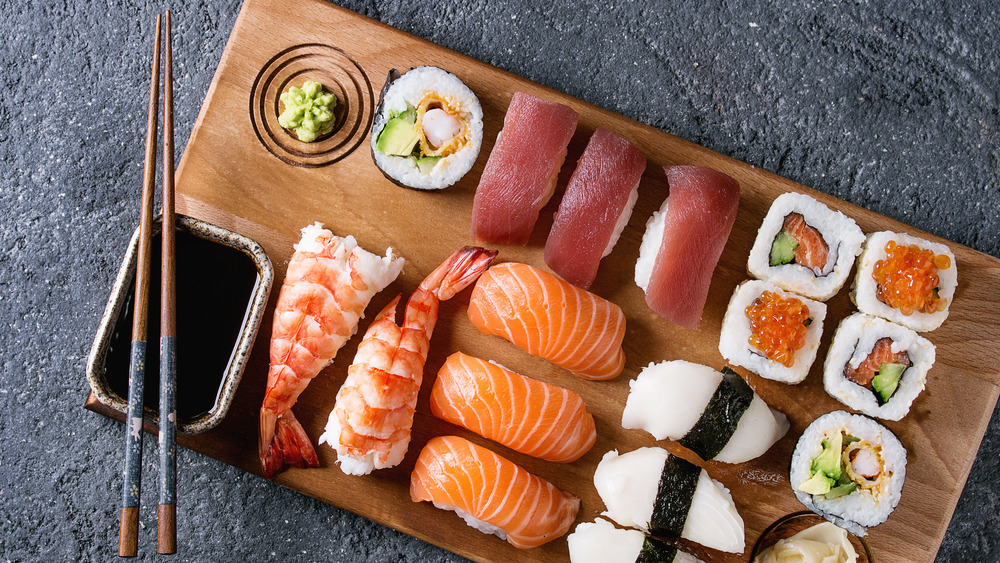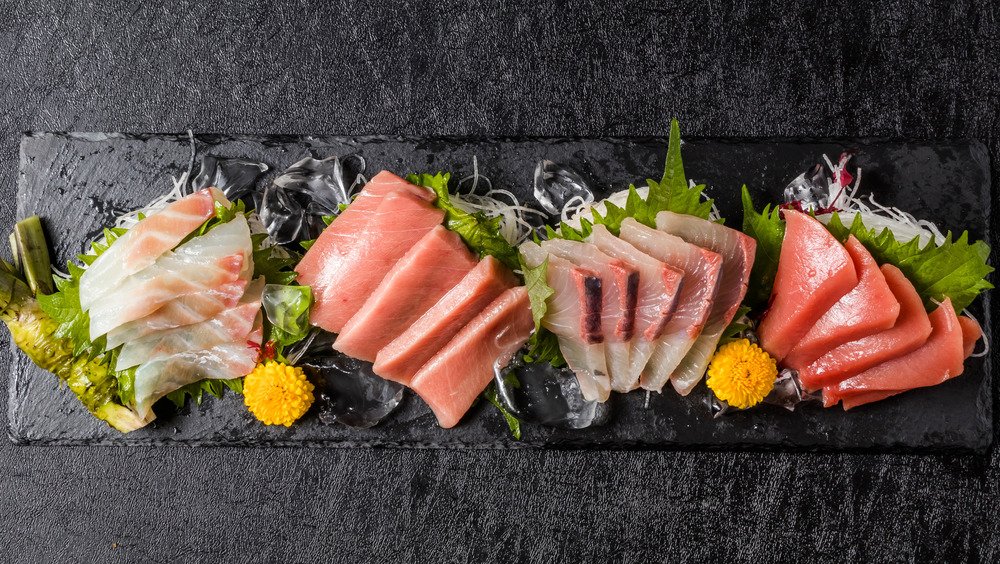The Real Difference Between Sushi And Sashimi
A 2018 survey by YouGov revealed an increasing interest in Japanese food in general in the U.S, which is now well-received by almost three-quarters of the population. From food courts to chic restaurants, the availability of Japanese options globally is constantly evolving. Experimenting with dish variations is a given in cooking, and this is certainly true with sushi, which has a long history beginning over 1,800 years ago (via SushiFAQ). While Japanese food of course encompasses far more than just sushi, the Tokyo Metropolitan Government states that it is probably the dish that has received the most attention internationally. So what exactly is sushi, and does it include sashimi, or is that actually a different food entirely?
Lion Fish restaurant, located in San Diego, California, explains that sushi and its seemingly similar counterpart sashimi have often been grouped together, but there is far less overlap between the two than sometimes thought. While frequently appearing in the same section on menus, these words are not interchangeable and will yield very different results.
Sushi vs. sashimi: Which is which?
Lion Fish restaurant explains that the word sushi translates to "it is sour," referring to the vinegar rice used as a base. Japan-Guide shares a variety of popular sushi ingredients, including fish, vegetables, tofu, and egg. The outlet also details various types of presentations that are categorized as sushi, with most actually omitting the characteristic seaweed wrap many Americans have come to expect. The Tokyo Metropolitan Government says these typical rolls are actually called norimaki if the seaweed sheet is on the outside of the rice, not simply sushi. If the rice is on the outside and the seaweed on the inside (as is a common preparation for the California roll) they're called uramaki.
Lion Fish restaurant translates sashimi to "pierced fish," referring to thinly sliced raw fish or meat. In their page on sashimi, Japan-Guide describes the preparation as generally consumed with a small amount of soy sauce, and perhaps some ginger and wasabi – this is a far cry from the overloaded sushi rolls you see in the states. The appeal of sashimi is that the raw fish or meat flavors are fully showcased without frills. According to Time, since sashimi doesn't include rice, it is almost pure protein and has greater health benefits compared to sushi. Next time you are eating Japanese food, keep an eye on unhealthy add-ons like mayonnaise and fried shrimp, and throw some sashimi onto your order for a protein boost!
Now that you know the difference between sushi and sashimi, you'll never find yourself ordering the wrong dish again.

